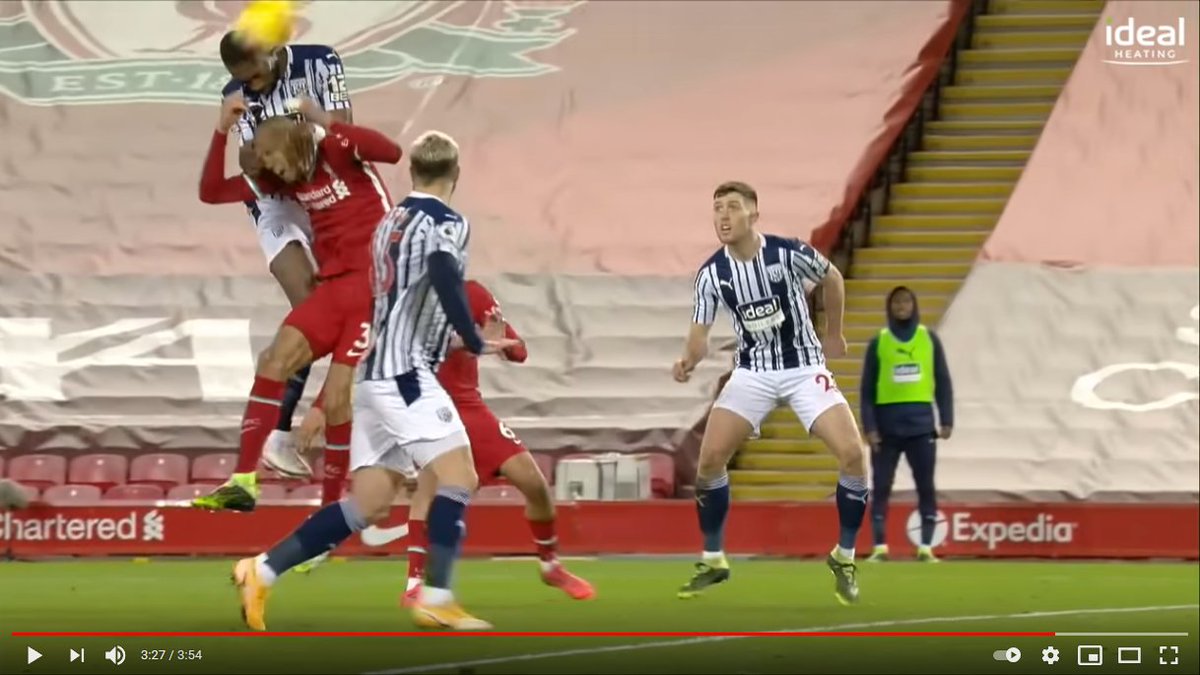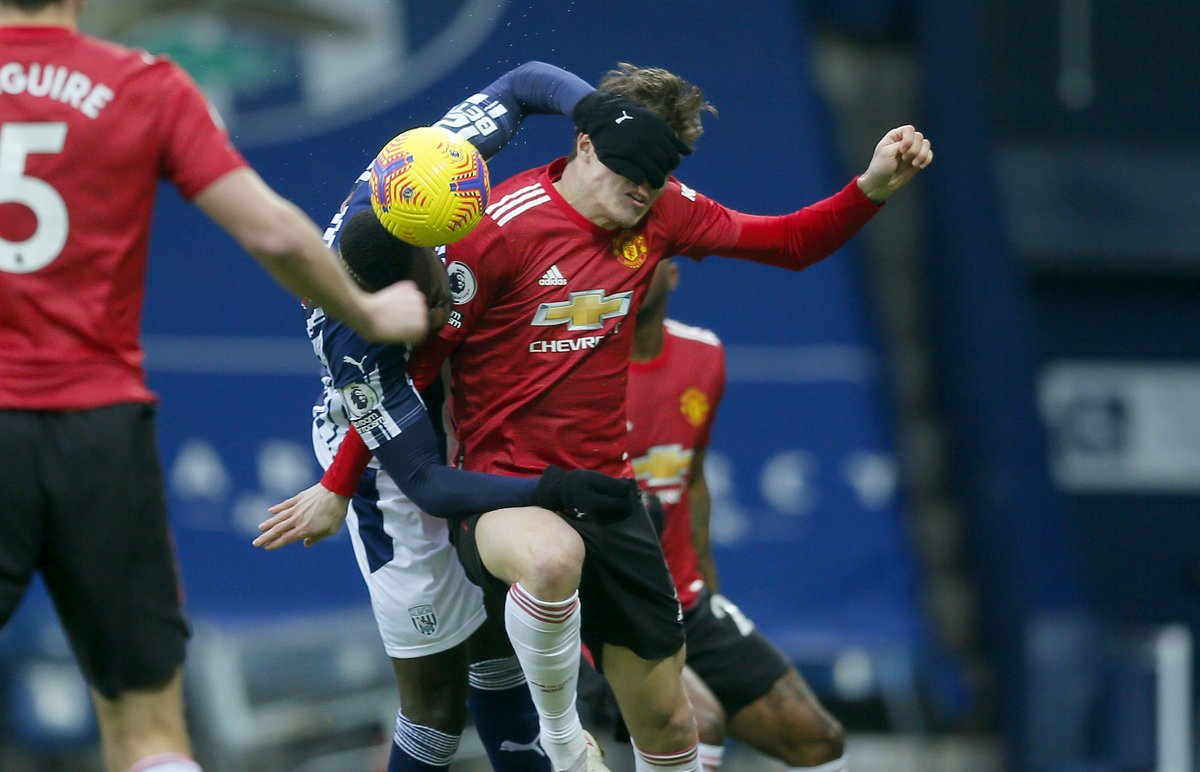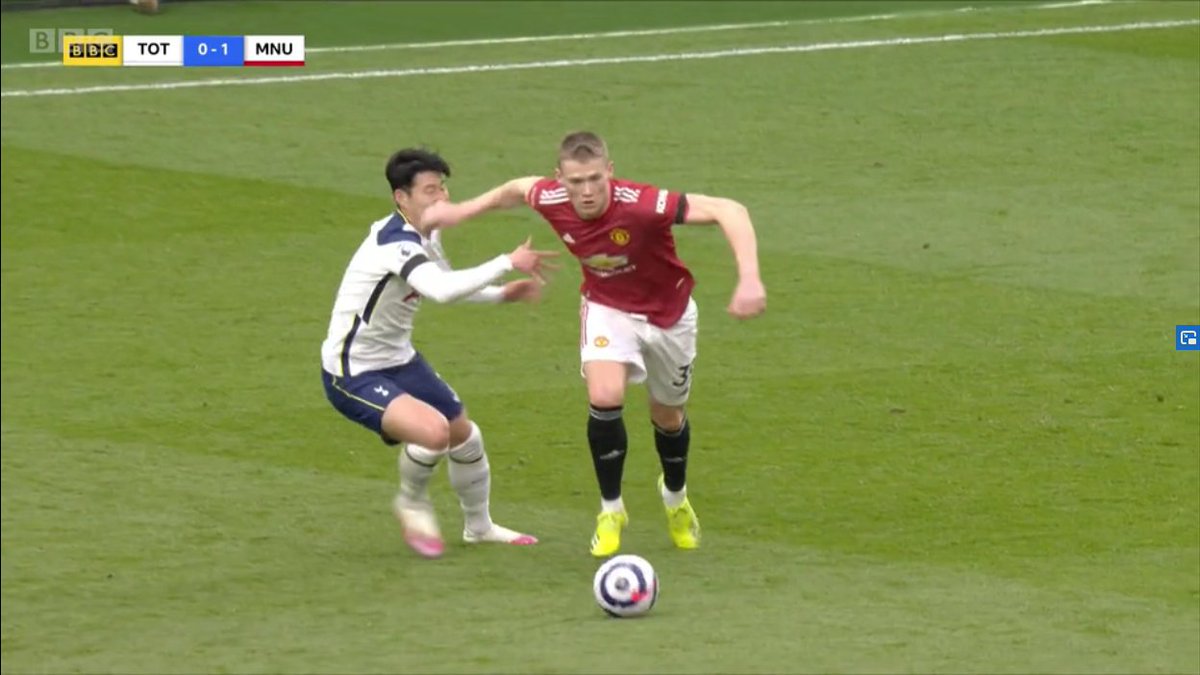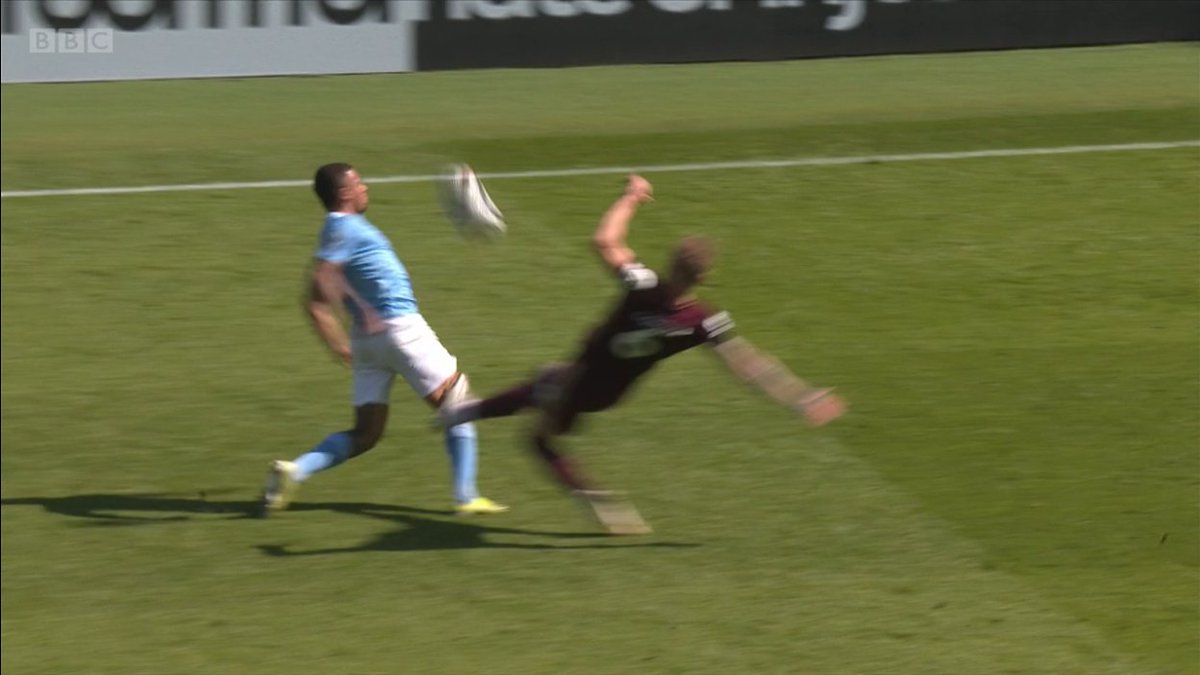
Here it is, your Monday VAR thread. Looking at:
- Spurs v Man United
- Burnley v Newcastle
- Why we're in this situation
- Comparison to Bundesliga / other leagues
- Brief offside (it's nothing new)
There's many moving parts to this. Strap in!
- Spurs v Man United
- Burnley v Newcastle
- Why we're in this situation
- Comparison to Bundesliga / other leagues
- Brief offside (it's nothing new)
There's many moving parts to this. Strap in!
Let's start with the big decisions.
Firstly, the Scott McTominay foul on Son Heung-Min.
This is very much along the same lines as the penalty Danny Welbeck was awarded against Liverpool. If the ref gives the foul, fine. But it's not for VAR in the PL.
Firstly, the Scott McTominay foul on Son Heung-Min.
This is very much along the same lines as the penalty Danny Welbeck was awarded against Liverpool. If the ref gives the foul, fine. But it's not for VAR in the PL.

In both, the decisions don't happen if the VAR doesn't get involved. If the VAR does, and based upon the replays, the ref is left with little option at the monitor.
The surprise is the VAR was Craig Pawson, who hasn't advised a goal be disallowed all season - even for offside.
The surprise is the VAR was Craig Pawson, who hasn't advised a goal be disallowed all season - even for offside.

The VAR decided that it wasn't a natural move of McTominay's hand in catching Son, but at the same time the officials decided against a second yellow card because it was accidental.
How do they go together in making this decision? It's all part of the muddle we're in.
How do they go together in making this decision? It's all part of the muddle we're in.
We've come to expect a certain bar in the build-up in the Premier League (it's a lot lower in other major leagues).
It was only the THIRD goal disallowed for a foul in the build-up.
1 foul on the goalkeeper, and 1 in the area. Not ONE outside the box (excl. Firmino handball).
It was only the THIRD goal disallowed for a foul in the build-up.
1 foul on the goalkeeper, and 1 in the area. Not ONE outside the box (excl. Firmino handball).
It becomes a major issue you are allowing these goals scored by West Brom against Liverpool and Man United in the actual act of scoring a goal, then you disallow a goal for a stray finger several passes back in a move. 





As mentioned earlier, it's very different in the other leagues. It's very likely the goal would be disallowed by the VAR elsewhere, but it's not what we expect in the Premier League.
Goals can be disallowed for inconsequential fouls. There is rarely any huge controversy.
Goals can be disallowed for inconsequential fouls. There is rarely any huge controversy.
Watch this Bundesliga clip from Borussia Monchengladbach vs. Freiburg last weekend, starting at 7 mins.
The goal was disallowed for a foul in the other half which was largely inconsequential to the move itself. It didn't even raise discussion.
The goal was disallowed for a foul in the other half which was largely inconsequential to the move itself. It didn't even raise discussion.
This kind of decision is very much the norm in the other top leagues. It doesn't take much for the VAR to become involved.
So in this sense alone, VAR is probably better in England. But that doesn't mean the process is in general.
So in this sense alone, VAR is probably better in England. But that doesn't mean the process is in general.

Onto Newcastle's penalty claim at Burnley.
The simple facts are:
- Anywhere else on the pitch it's a free-kick (and even was in the second half)
- If that's an attacker it's a free-kick, and most probably a yellow card too

The simple facts are:
- Anywhere else on the pitch it's a free-kick (and even was in the second half)
- If that's an attacker it's a free-kick, and most probably a yellow card too

The VAR, Stuart Attwell, decided there was a touch on the ball and the Newcastle player ducked in.
It's a nonsense explanation which sounds like looking for a way not to give an obvious decision.
Attwell hasn't advised a pen for a foul as VAR all season, including this one.
It's a nonsense explanation which sounds like looking for a way not to give an obvious decision.
Attwell hasn't advised a pen for a foul as VAR all season, including this one.

Which brings us round to where we are now. @WeAreTheFSA are conducting a fan consultation on VAR, with results that will be fed back to the Premier League.
But fan feedback isn't going to change the effectiveness of referees as VARs and their decision-making.
But fan feedback isn't going to change the effectiveness of referees as VARs and their decision-making.
There is obviously a lack of confidence among VARs about what constitutes a clear and obvious error.
The only way that can change is through better guidance and training; a fan consultation won't fix performance level and understanding.
The only way that can change is through better guidance and training; a fan consultation won't fix performance level and understanding.
VAR in the Premier League has, without any doubt, got a lot worse in the last two months.
Confidence is shot and VARs are making bad decisions themselves, or not correcting obvious errors of referees.
That's not to say the general narrative is helpful.
Confidence is shot and VARs are making bad decisions themselves, or not correcting obvious errors of referees.
That's not to say the general narrative is helpful.
Almost every VAR decision is immediately turned into a controversy in England (regardless of merit).
This doesn't happen to the same degree in other countries - even though they have controversies.
It adds to the pressure on officials and has to have an effect over time.
This doesn't happen to the same degree in other countries - even though they have controversies.
It adds to the pressure on officials and has to have an effect over time.
Let's take this example from the weekend. Handball penalty given by the VAR against Philip Mwene of Mainz vs. Cologne.
It's almost identical Ryan Bertrand against Wolves.
In England, the Bertrand call was a scandal. In Germany, it's not even mentioned.

It's almost identical Ryan Bertrand against Wolves.
In England, the Bertrand call was a scandal. In Germany, it's not even mentioned.


Of course, it doesn't help that in England there is effectively no official word on decisions, other than through PGMOL guidance notes.
No one in charge at PGMOL ever speaks on the record. They never do interviews. As such, how can the narrative ever be countered?
No one in charge at PGMOL ever speaks on the record. They never do interviews. As such, how can the narrative ever be countered?
Moving on, the Liam Cooper red is correct in today's game. If you catch an opponent high, with the studs leading and a degree of force, it's highly likely you will get sent off.
That was a good VAR intervention from David Coote - though I'm sure Leeds fans will disagree.

That was a good VAR intervention from David Coote - though I'm sure Leeds fans will disagree.


The Raheem Sterling tackle is very different, and falls into the category of many challenges we see every weekend where it is slightly mistimed and contact is around the ankle. It's definitely not a red card. 







A few tweets on offside, but not in any great detail. This has happened 26 times this season now, so the discourse is pretty much exhausted.
If you want to know how offside works and its true flaws, it's all laid out here:
If you want to know how offside works and its true flaws, it's all laid out here:
https://twitter.com/DaleJohnsonESPN/status/1318143868462911490?s=20
I gave my thoughts on the current situation, and what needs to happen to get us out of this Groundhog Day of VAR offside decisions, on Friday.
It all still applies, though I am very hopeful we will have some movement on this next season.
It all still applies, though I am very hopeful we will have some movement on this next season.
https://twitter.com/DaleJohnsonESPN/status/1380612151216377858?s=20
The long-term way out of this is semi-automated VAR offside:
All you need to know:
- What is it?
- When are we getting it?
- Why is it so good?
espn.co.uk/football/blog-…
All you need to know:
- What is it?
- When are we getting it?
- Why is it so good?
espn.co.uk/football/blog-…
The VAR had to check Matty Cash hadn't touched the ball first, as that would have reset offside.
This isn't "a Premier League thing". See Erling Haaland's winner for Borussia Dortmund against Paderborn, allowed due to this feather touch by a defender.
This isn't "a Premier League thing". See Erling Haaland's winner for Borussia Dortmund against Paderborn, allowed due to this feather touch by a defender.
And finally, my usual reminder that all the top leagues have the same offside tech, applied in the same way, with marginal offsides to the lean of the shoulder.
The UEFA light-touch method, supported by Pierluigi Collina, has to be the way forward for next season.



The UEFA light-touch method, supported by Pierluigi Collina, has to be the way forward for next season.




Collina said last month about VAR offside and tech decision:
"If the images are not conclusive, then the field decision cannot be overruled. So it is important that what is shown offers something conclusive. Otherwise, I would say, in case of doubt, follow the field decision."
"If the images are not conclusive, then the field decision cannot be overruled. So it is important that what is shown offers something conclusive. Otherwise, I would say, in case of doubt, follow the field decision."
Therefore, Collina says offside should only be given when it is a graphically clear decision.
That effectively means red and blue lines not touching.
The leagues were told not to do this for this season, but UEFA do in UEL/UCL 🤷♂️.
It must surely change.
That effectively means red and blue lines not touching.
The leagues were told not to do this for this season, but UEFA do in UEL/UCL 🤷♂️.
It must surely change.
ADDITION:
Here's a goal disallowed for Lazio at Hellas Verona for a foul by Felipe Caicedo, who was booked.
It's similar to McTominary, though Caicedo scored.
1 min 20 secs.
Here's a goal disallowed for Lazio at Hellas Verona for a foul by Felipe Caicedo, who was booked.
It's similar to McTominary, though Caicedo scored.
1 min 20 secs.
• • •
Missing some Tweet in this thread? You can try to
force a refresh






